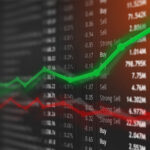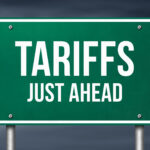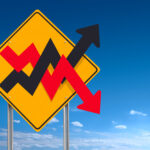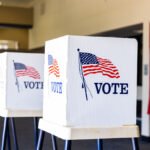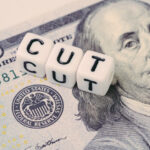The ABC’s of Economic Recovery
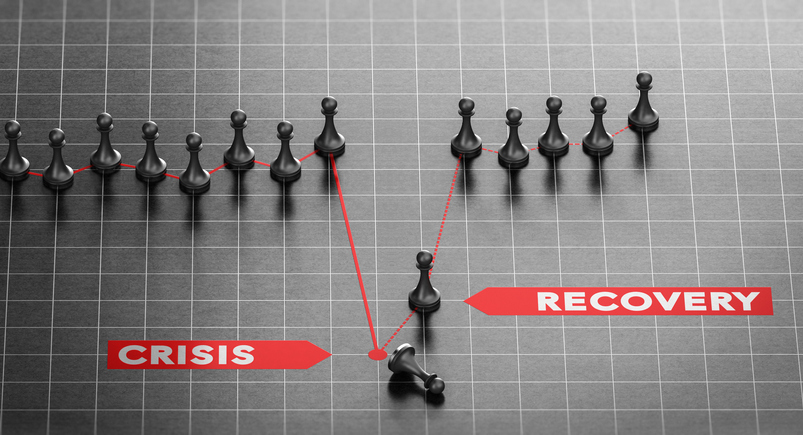
If you have been watching the news lately, you may have heard phrases such as “V-shaped economic recovery” thrown around when discussing the economic recovery after the coronavirus outbreak. We would like to take a second to discuss the different types of economic recoveries, historical examples of each, and what we can do to avoid a worst-case scenario.
Download Printable Article (PDF) >>>
The best-case scenario when regarding an economy recovery is known as a V-shaped recession. Just like its name states, these recessions tend to occur as a steep decline that is followed by a rapid recovery. A recent example of this type of recession is the 1990-1991 recession, as the recession only lasted from July 1990 to March 1991. For a V-shaped recovery to occur, it would require many best-case scenarios. Testing would have to become readily available by early summer, allowing social distancing guidelines to be relaxed by May. Also, this would require a significant buildup of demand to be unleashed as soon as businesses reopen, as well as businesses rehiring most of the employees that had been fired or furloughed.
Another type of economic recovery is known as a U-shaped recession. A U-shaped recession is simply a prolonged version of a V-shaped recovery, characterized by a prolonged drawdown with a prolonged recovery period. A recent example of a U-shaped recovery is the Great Recession, as the economic drawdown was prolonged and followed by a muted but gradual recovery. A U-shaped recovery would be fueled by a shutdown that extends into the summer months and sees a sizable number of workers that are unemployed unable to return to their previous jobs. Also, while there may be pent up demand, businesses may not get the boom they anticipate if consumers continue to be cautious in public.
A W-shaped recession, better known as a “double-dip recession,” occurs when the economy has a short spurt of economic growth following a drawdown, only to be followed by another economic drawdown before completely recovering. An example in modern history is the 1980-1982 recession. While the economy had an initial drawdown followed by a recovery, the combatting of stagflation (inflation during high unemployment and economic demand stagnation) led to a second and final drawdown that successfully halted the spiking inflation. A W-shaped recovery would most likely be triggered by a second wave of the coronavirus. In this scenario, states may prematurely reopen, causing the flattening curve to spike all over again. In this instance, while the economy may get a boost from the initial reopening, the shutdown that would coincide with the second wave would lead to an additional economic drawdown.
The worst-case scenario for a recovery is known as an L-shaped recession. An L-shaped recession involves a sluggish recovery that can take years (sometimes even decades) to recover from; depressions are known as L-shaped recessions. A classic example of this type of recession is the economic slowdown in Japan following their robust, post-World War II economic prosperity. Once their asset bubble popped, a combination of stagnant economic growth and deflation led to a prolonged depression best known as the Lost Score. An L-shaped recovery typically involves a perfect storm of worst-case scenarios. For this to occur, we would imagine that the stay-at-home orders would extend through most of this year, if not into next year. Also, an L-shaped recovery would require a high default rate for businesses on their loans, as well as an unanticipated number of bankruptcies of businesses of all sizes. Finally, people may be indefinitely fearful of entering public spaces, leading to a prolonged decline in consumer spending outside of necessities.
While we wish we had a crystal ball to know for certain what path the virus and our economy will take, we have to continue to monitor the technical and fundamental strength of the economy and, in turn, the stock market to make our next decisions. On the technical side, more than half of our recession indicators continue to show a negative reading; in fact, none of them have returned to a positive reading. On the fundamental side, we believe that we have yet to truly see the economic impact of this shutdown. Unemployment continues to rise, and second quarter estimates of US GDP (Gross Domestic Product i.e the goods and services produced inside the U.S.) are indicating historically low levels. In short, we have yet to see material changes in either of these categories that would indicate a positive reading for the economy. However, we are continuing to watch both factors daily, and we will notify you when we see a shift in either of them. In the meantime, don’t hesitate to reach out if you have any additional questions or concerns.
Thank you,
Bud Verfaillie & Ashley Rosser
 Bud Verfallie, CEO
Bud Verfallie, CEO
Bud holds several professional designations including: AIFA (Accredited Investment Fiduciary Analyst/Center for Fiduciary Studies), PPC (Professional Plan Consultant/Financial Service Standards), and CFP (Certified Financial Planner/College of Financial Planning), ranking him in the top 1% of all Investment Consultants nationally.
Bud has been an instructor/trainer for over 25 years. Subjects include: “How to Initiate a Successful Asset Management Business in Your Accounting Firm”, “Converting Your Commissioned-Based Investment Practice to Fee-Based”, “How to Establish an Asset Management Practice”, and “Investments and Financial Planning.” Bud has taught financial planners CFP Preparatory classes for the NIF.
Prior to her career in the financial services industry, Ashley earned her Bachelor of Science in Nursing from Cedarville University.
Ashley decided to make a career change from her ten years within the healthcare industry as a pediatric emergency room nurse to retirement and 401K investment planning. She joined Victory Wealth Partners in 2008 after obtaining her Series 65 professional financial license and went on to earn her AIF (Accredited Investment Fiduciary) professional designation from the Center for Fiduciary Studies.





